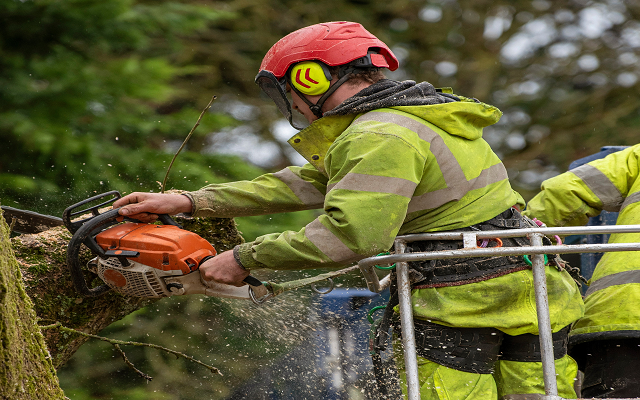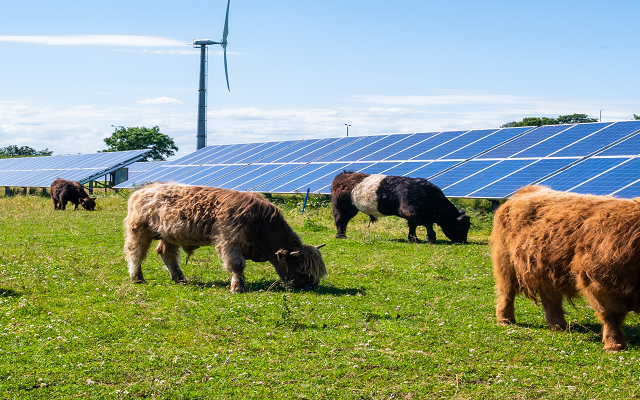Land Business Update | Week Commencing 27th November 2023
Welcome to our fortnightly update on key land management, farming, planning, forestry, environmental and energy issues.
Forestry
Commercial forestry transactions shrink, but values holding – John Clegg & Co’s interim Forest Market Review 2023
Greater caution has crept into the commercial forestry market in Great Britain than there was 18 months ago. The amount of land traded during the first nine months of 2023 is down 80% compared with 2022 to 2,300 hectares. Most of the activity has been in Scotland (as is usual). The average selling price was 6% higher than in 2022, at £21,900 / stocked hectare, although it is below 2021’s record levels. However, while demand has weakened slightly, there remains a surplus of capital looking for the right investment opportunities. This is shown by the fact that 69% of the forests sold in 2023 to date sold within six months of marketing, which is more than during 2022 when the market was more active. The amount of forest land for sale has been lower in 2023 as most forestry investors have no debt and, when values fall, can hold their investment and are under no pressure to sell.
The correlation between timber prices and property values is strong and so, with global timber demand expected to more than double by 2050 and as the construction industry increasingly looks to wood as a way of decarbonising, John Clegg & Co remains confident about timber prices in the longer term and consequently commercial forestry values.
The Forest Market Review is based on completed sales of commercial forestry properties, so predominantly conifer, of 20 hectares or more in Great Britain which have been publicly or privately marketed in the calendar year. A more detailed analysis of the commercial forestry market in 2023 will be published in March 2024. Please speak to Simon Hart, Harry Graham or Alex Brearley for more information.
Christmas trees and the eight-toothed spruce bark beetle
Spruce Christmas trees should be low risk to the beetle as most will be small and healthy. However, within the demarcated area in South East England, the Forestry Commission requires that the movement of all trees over three metres must be authorised by a Plant Health Inspector. The Inspector will assess the risk, possibly carry out an inspection and set out movement conditions in an authorisation letter. Outside the demarcated area and across the whole of Great Britain, the movement of any species of Christmas tree over three metres requires a plant passport.
Environment
Mapping the drivers and impact of the carbon market on rural enterprises
Strutt & Parker is part of a consortium led by Bournemouth University that is mapping the different stakeholders involved in carbon market transactions and whether there are any gaps and opportunities to improve. Please email Jason Beedell if you are interested in attending a short workshop on this (face-to-face or virtual).
High Court finds Defra ‘unlawful’ in failing to protect waterways from pollution – water plans now under question
Fish Legal and Pickering Fishery Association have won a judicial review of the management of Costa Beck river in Humber, which has been polluted by hundreds of sewage overflow discharges from the Pickering treatment works. The court ruled that there was no evidence that the government and Environment Agency’s plans to restore water bodies under the Water Framework Directive regulations could be expected to achieve the stated environmental objectives. This could open the door to similar challenges across the country. This type of challenge, about whether policies are likely to achieve their stated objectives, is becoming more common – remember the challenge to the Government’s net zero plan – and could happen for habitat restoration on land too.
European Parliament & Council agree provisional deal on nature restoration law
The agreement is to restore at least 20% of land and 20% of sea areas by 2030, with rising targets so that all ecosystems in need of restoration are restored by 2050. Member States will be asked to prepare national restoration plans detailing how they intend to achieve these targets, giving priority to areas located in Natura 2000 sites until 2030. Some of the more granular targets include:
- On farmland, the requirement is to achieve a positive trend in two out of three indicators – the grassland butterfly index, the share of agricultural land with high-diversity landscape features, and the stock of organic carbon in cropland mineral soil.
- On rewetting peatlands, the aim is to put in place restoration measures for at least 30% by 2030, with at least a quarter rewetted. Rewetting will be voluntary for farmers and private landowners.
- On pollinators, to reverse the decline in populations by 2030 at the latest.
- On forestry, to achieve a positive trend in indicators by 2030, including planting three billion trees and at least 25,000km of river made free flowing.
There is an ‘emergency brake’ built into the policy so the farming targets can be suspended, under exceptional circumstances, if they have a severe effect on food production. This is an ambitious agreement and some farming organisations feel it is unrealistic. One of the next steps is to assess how much it will cost to deliver and how to deal with any shortfalls in funding.
We have partnered with Buglife
Invertebrates are vitally important to a healthy planet and Buglife’s aim is to halt the extinction of and restore sustainable populations of insects. We will be raising awareness of the importance of and challenges to the survival of invertebrates and supporting practical conservation projects through volunteering activities.
Farming
Slurry Infrastructure grant – round two now open
Land managers can apply for grants of £25k to £250k towards different types of slurry store, slurry store cover and supporting equipment. Slurry separators, in-situ cast concrete stores and slurry storage for pig farmers have been added to this round. Landlords can also underwrite funding agreements. The online checker closes on 17th January. Please contact our farming team if you would like any advice on slurry or manure management.
Property and economy
Second National Infrastructure Assessment
The National Infrastructure Commission publishes an assessment of the UK’s infrastructure needs to 2055 and beyond every five years. This latest assessment restates the need to switch to electric vehicles and swap gas boilers for cleaner, more efficient heat pumps, which it says should roughly halve energy costs for households in the coming decades. It also, repeatedly, says that the transition must be managed carefully to ensure the public are supported with the upfront costs and that the government protects the living standards of those least able to pay. Other significant points include:
- There would be significant benefits from improving connectivity, both from transport networks and from digital networks, which means nationwide coverage of gigabit broadband and 5G services.
- Better maintenance and renewal of existing infrastructure is essential, as is building new infrastructure to protect households and businesses from flooding and drought. This will require a significant increase in spending on infrastructure, which should be paid for over coming decades.
- That the government should take a clear decision that electrification is the only viable option for decarbonising buildings at scale. It says that the costs of installing a heat pump should be fully covered for lower income households and £7,000 support is offered to all others.
- Recycling rates have not increased in a decade. The report calls for a more sustainable waste system to be developed to meet the 65% recycling target by 2035.
Study finds an acceleration of the ‘suburbanisation of poverty’
The combination of higher rents in UK big cities and benefit cuts has been forcing low-income private renters out of city centres towards the suburbs over the last decade. The study by the University of Glasgow found that between 2012 and 2020 one in ten private renters in the UK’s 10 biggest cities were displaced from central locations to the suburbs. Suburbs usually have poorer transport connections and less job opportunities, thus widening the gap between richer and poorer. Cities like Bristol saw a reduction of 38% in low-income households living in privately rented homes between 2012 and 2020, whilst London and Liverpool experienced a 10% reduction over that same period. The government has said that it is helping to ease the pressure of higher rents with financial support packages, but policymakers are yet to fully consider the impacts that displacing low-income workers away from city centres will have on different sectors of the economy, such as hospitality.
Fire Safety Act 2021 (England and Wales)
This legislation, which came into force in May 2022, requires that the Responsible Person must undertake a Fire Risk Assessment of the ‘common parts’ of shared housing, which can include a house converted into two or more flats, a block of flats and a house in multiple occupation (HMO). Please contact Gulliver Hedley, Health and Safety Manager at Strutt & Parker, if you would like to discuss this; he also recommends that it is good practice to remind the occupier / tenants of their responsibilities. NB the Act already covers non-domestic premises.






